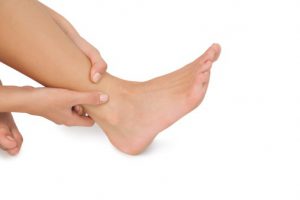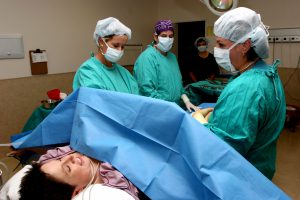 Colorectal cancer is a disease that causes abnormal cells or tumors to develop in the colon or rectum. It is the third most commonly diagnosed type of cancer found in men and women in the United States.
Colorectal cancer is a disease that causes abnormal cells or tumors to develop in the colon or rectum. It is the third most commonly diagnosed type of cancer found in men and women in the United States.
Although colorectal cancer causes the deaths of approximately 50,000 people each year; the rate of survival is improving due to education, early detection and treatment.
Learning the risk factors of colorectal cancer is essential as there are risk factors you can control and some you cannot. The risk factors you can control include:
- Smoking
- Being overweight or obese
- Lack of physical activity
- Poor diet – a diet rich in red meats and processed meats can increase your risk
- Heavy alcohol consumption
These factors can be addressed by quitting smoking, exercising, eating a healthy and balanced diet and moderating your consumption of alcoholic beverages.
The factors that you cannot control that may contribute to colorectal cancer are:
- Age- people over the age of 50 have a higher risk in developing the disease
- A family history of colorectal cancer or adenomatous polyps
- A personal history of colorectal polyps, colorectal cancer or inflammatory bowel disease
- Having an inherited gene defect that can cause family cancer syndromes such as familial adenomatous polyposis (FAP), Gardner syndrome, Turcot syndrome or Lynch syndrome
- Race or ethnicity
- Having type 2 diabetes
Knowing your risk factors and taking appropriate actions can help you to reduce the probability of developing the disease.
Although it is not completely clear what causes colorectal cancer; it can be prevented by receiving regular screenings. With regular screenings, polyps or colon cancer can be found and treated early before advancing.
There are several testing methods your doctor may use to screen for colorectal cancer. Screening tests may include a colonoscopy or other testing methods such as fecal occult blood test, flexible sigmoidoscopy, CT colonography or double-contrast barium enema. The American Cancer Society recommends that men and women should receive screenings beginning at the age of 50.
For a complete guide to the American Cancer Society’s recommendations for colorectal cancer early detection, please visit https://www.cancer.org/cancer/colon-rectal-cancer/early-detection/acs-recommendations.html
All content of this newsletter is intended for general information purposes only and is not intended or implied to be a substitute for professional medical advice, diagnosis or treatment. Please consult a medical professional before adopting any of the suggestions on this page. You must never disregard professional medical advice or delay seeking medical treatment based upon any content of this newsletter. PROMPTLY CONSULT YOUR PHYSICIAN OR CALL 911 IF YOU BELIEVE YOU HAVE A MEDICAL EMERGENCY.




